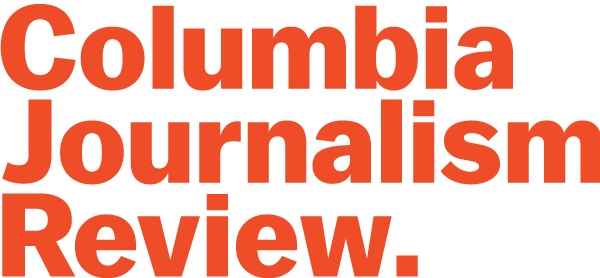Sign up for The Media Today, CJR’s daily newsletter.
“Can you fair use it?”
That was the defining question of the Online News Association’s copyright class last week. This wasn’t necessarily the most fun session of the three-day conference. But it was one of the most practical, and it answered questions that most journalists ask themselves every day and provide half-assed answers to.
Few journalists care about copyright law for its own sake. We come across a picture or a video or a great quote, and we want to know: Is it okay to post this? And the twisty logic of copyright means that it’s often easiest to just shrug and go for it. You’re probably fine. Right?
The ONA session was aimed at giving reporters and editors more confidence in making those decisions. It was part of the conference’s “law school”–a program that’s been run for the past two years as an add-on to the main event, but this year was crunched down and run throughout the weekend.
“Law shouldn’t be a scary subject,” says Jon Hart, a lawyer who specializes in representing media companies, is ONA’s general counsel, and co-taught the copyright session. “And if we are successful in what we’re trying to do, we’re helping smart people think about the law and not be intimidated.”
I’d recommend that any journalist who’s posting pictures or video or any bit of content created by another person onto the Web take the time to listen to what Hart and media lawyer Eric Lieberman had to say in their copyright session. Even as someone who, at this point, knows a fair bit about copyright, I found that there were a few points on which I was, if not mystified, at least a little bit confused.
For instance, no one can hear this often enough: “Attribution doesn’t excuse infringement.” Just because you give credit to a photographer and link to their site doesn’t mean you can use their work.
And here’s a subtle but important point made by Lieberman, who worked for years as a lawyer for the Washington Post and is now general counsel at the TV company Fusion. “You should keep in mind that fair use is a defense to a copyright infringement,” Lieberman said. Copyright law wasn’t designed only to help creators make money; fair use provisions help guarantee that other people can criticize, teach, or transform existing work. But it’s not a fail-safe. “The burden is going to be on you to prove that you met the fair use requirements,” Lieberman said. “And you’re overcoming a presumption of copyright infringement. You’re immediately starting on the defensive.”
That being said, you’re going to want to fair use things. Often.
Can you fair use it? Lieberman shared his own simple, helpful system for walking through copyright questions.
Begin simply. Ask first: Is what I want to use copyrighted?
The answer is almost always yes, “unless it’s really, really, really old,” says Lieberman. (How old is really, really, really old? “Older than Mickey Mouse,” Hart suggested. “If the copyright for Mickey Mouse comes up, you can guarantee there will be legislation extending copyright.”)
Next question: “Do I have permission to use it?”
If you can, get it. There are many ways: in writing, over the phone, in person, by Facebook, and “in an implied way by custom and practice,” said Lieberman. For instance, if there’s an embed code on a video (and the person who posted it clearly owns the copyright), that counts as permission.
The key question: Can I use it, even without permission?
There is no simple answer to this question. And Hart and Lieberman emphasized that there are also no straightforward rules, either. There are four factors that determine fair use, and judges balance them against each other. But, Lieberman says, “judges are all over the place.” There are no formulas here, no airtight defenses. The only clear answer: “If you’re risk averse, you should get permission,” he added.
But Hart and Lieberman walk through how to think about each factor. Here’s what I found most helpful for each point:
What’s the purpose and character of the use? If you want to illustrate a story with a photo, that’s unlikely to slide. If you’re commenting on or analyzing that specific photo, you’ve got a better case.
What the nature of the original work? “The more creative the work, the less fair-use rights there are going to be,” Lieberman said.
How much did you use? If you’re using a photo, you’re probably going to use the whole thing. That counts against you.
Are you affecting its value? Is there a market for the work? In the case of photography and music, yes. “There is clearly a market for clearing these things and paying for their use, and if you used it without permission, you’re going to get approached,” said Lieberman. “And you better have a pretty good reason for why you used it without paying for it.”
Hart and Lieberman went into more gory detail, and it’s all available, recorded, on ONA’s website. It’s worth listening to. And here’s a last bit of practical advice from the class: Give people a way, on your website, to contact you, if they think you’ve screwed up.
Disclosure: CJR has received funding from the Motion Picture Association of America (MPAA) to cover intellectual-property issues, but the organization has no influence on the content.
Has America ever needed a media defender more than now? Help us by joining CJR today.


